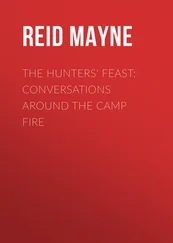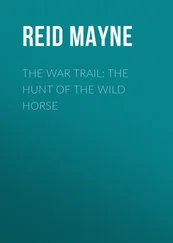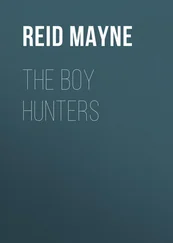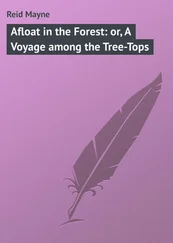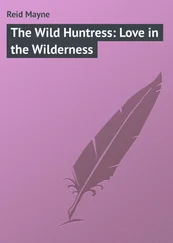Mayne Reid - Bruin - The Grand Bear Hunt
Здесь есть возможность читать онлайн «Mayne Reid - Bruin - The Grand Bear Hunt» — ознакомительный отрывок электронной книги совершенно бесплатно, а после прочтения отрывка купить полную версию. В некоторых случаях можно слушать аудио, скачать через торрент в формате fb2 и присутствует краткое содержание. Жанр: Прочие приключения, foreign_prose, на английском языке. Описание произведения, (предисловие) а так же отзывы посетителей доступны на портале библиотеки ЛибКат.
- Название:Bruin: The Grand Bear Hunt
- Автор:
- Жанр:
- Год:неизвестен
- ISBN:нет данных
- Рейтинг книги:3 / 5. Голосов: 1
-
Избранное:Добавить в избранное
- Отзывы:
-
Ваша оценка:
- 60
- 1
- 2
- 3
- 4
- 5
Bruin: The Grand Bear Hunt: краткое содержание, описание и аннотация
Предлагаем к чтению аннотацию, описание, краткое содержание или предисловие (зависит от того, что написал сам автор книги «Bruin: The Grand Bear Hunt»). Если вы не нашли необходимую информацию о книге — напишите в комментариях, мы постараемся отыскать её.
Bruin: The Grand Bear Hunt — читать онлайн ознакомительный отрывок
Ниже представлен текст книги, разбитый по страницам. Система сохранения места последней прочитанной страницы, позволяет с удобством читать онлайн бесплатно книгу «Bruin: The Grand Bear Hunt», без необходимости каждый раз заново искать на чём Вы остановились. Поставьте закладку, и сможете в любой момент перейти на страницу, на которой закончили чтение.
Интервал:
Закладка:
“And quite as large too?”
“Quite as large: the tracks of some kinds even larger than those of most men. As, for instance, the white and grizzly species – many individuals of both having paws over twelve inches in length!”
“The bear does not tread upon his toes in walking, but lays the whole sole of his foot along the ground – does he not?” asked Ivan.
“Precisely so,” replied Alexis; “and hence he is termed a plantigrade animal, to distinguish him from those other kinds, as horses, oxen, swine, dogs, cats, and so forth, that all, in reality, step upon their toes.”
“There are some other plantigrade animals besides bears?” said Ivan, interrogatively; “our badger and glutton, for instance?”
“Yes,” answered the naturalist. “These are plantigrade; and for this reason they have been classed along with the bears under the general name ursidae ; but in father’s opinion, and mine too,” added Alexis, with a slight sparkle of scientific conceit, “this classification is altogether an erroneous one, and rests upon the very insignificant support of the plantigrade feet. In all other respects the different genera of small animals, that have thus been introduced into the family of the bears are, as unlike the latter almost bears as are to blue bottles.”
“What animals have been included in this family ursidae ?”
“The European glutton and American wolverine ( gulo ), the badgers of both continents, and of Asia ( meles ), the raccoon ( procyon ), the Cape ratel ( mellivora ), the panda ( ailurus ), the benturong ( ictides ), the coati ( nasua ), the paradoxure ( paradoxurus ), and even the curious little teledu of Java ( mydaus ). It was Linnaeus himself who first entered these animals under the heading of bears – at least, such of them as were known in his day; and the French anatomist, Cuvier, extended this incongruous list to the others. To distinguish them from the true bears, they divided the family into two branches – the ursinae , or bears properly so called, and the subursinae , or little bears. Now, in my opinion,” continued Alexis, “there is not the slightest necessity for calling these numerous species of animals even ‘ little bears .’ They are not bears in any sense of the word: having scarce any other resemblance to the noble Bruin than their plantigrade feet. All these animals – the Javanese teledu excepted – have long tails; some of them, in fact, being very long and very bushy – a characteristic altogether wanting to the bears, that can hardly be said to have tails at all. But there are other peculiarities that still more widely separate the bears from the so called ‘little bears;’ and indeed so many essential points of difference, that the fact of their being classed together might easily be shown to be little better than mere anatomical nonsense. It is an outrage upon common sense,” continued Alexis, warming with his subject, “to regard a raccoon as a bear, – an animal that is ten times more like a fox, and certainly far nearer to the genus canis than that of ursus . On the other hand, it is equally absurd to break up the true bears into different genera – as these same anatomists have done; for if there be a family in the world the individual members of which bear a close family likeness to one another, that is the family of Master Bruin. Indeed, so like are the different species, that other learned anatomists have gone to the opposite extreme of absurdity, and asserted that they are all one and the same! However, we shall see as we become acquainted with the different members of this distinguished family, in what respects they differ from each other, and in what they are alike.”
“I have heard,” said Ivan, “that here, in Norway and Lapland, there are two distinct species of the brown bear, besides the black variety, which is so rare; and I have also heard say that the hunters sometimes capture a variety of a greyish colour, which they call the ‘silver bear.’ I think papa mentioned these facts.”
“Just so,” replied Alexis; “it has been the belief among Swedish naturalists that there are two species, or at least permanent varieties, of the brown bear in Northern Europe. They have even gone so far as to give them separate specific names. One is the ursus arctos major , while the other is ursas arctos minor . The former is the larger animal – more fierce in its nature, and more carnivorous in its food. The other, or smaller kind, is of a gentler disposition – or at all events more timid – and instead of preying upon oxen and other domestic animals, confines itself to eating grubs, ants, roots, berries, and vegetable substances. In their colour there is no perceptible difference between the two supposed varieties – more than may be often found between two individuals notedly of the same kind; and it is only in size and habits that a distinction has been observed. The latest and most accurate writers upon this subject believe that the great and little brown bears are not even varieties; and that the distinctive characteristics are merely the effects of age, sex, or other accidental circumstances. It is but natural to suppose that the younger bears would not be so carnivorous as those of greater age. It is well-known that preying upon other animals and feeding upon their flesh, is not a natural instinct of the brown bear; it is a habit that has its origin, first in the scarcity of other food, but which, once entered upon, soon develops itself into a strong propensity – almost equalling that of the felidae .
“As to the black bear being a distinct species, that is a question also much debated among both hunters and naturalists. The hunters say that the fur of the black European bear is never of that jetty blackness which characterises the real black bears of American and Asiatic countries, but only a very dark shade of brown; and they believe that it is nothing more than the brown fur itself, grown darker in old age. Certainly they have reason for this belief: since it is a well-known fact that the brown bears do become darker as they grow older.”
“Ha!” said Ivan, with a laugh, “that is just the reverse with us. Look at Pouchskin there! Your hair was once black, wasn’t it, old Pouchy?”
“Yes, Master Ivan, black as a crow’s feathers.”
“And now you’re as grey as a badger. Some day, before long – before we get home again may be – your moustache, old fellow, will be as white as an ermine.”
“Very like, master, very like – we’ll all be a bit older by that time.”
“Ha! ha! ha!” laughed Ivan; “you’re right there, Pouchy; but go on, brother!” he added, turning to Alexis, “let us hear all about these Scandinavian bears. You have not spoken yet of the ‘silver’ ones.”
“No,” said Alexis; “nor of another kind that is found in these countries, and that some naturalists have elevated into a different species – the ‘ringed bear.’”
“You mean the bears with a white ring round their necks? Yes, I have heard of them too.”
“Just so,” rejoined Alexis.
“Well, brother, what do you think? is it a distinct species, or a permanent variety?”
“Neither one nor the other. It is merely an accidental marking which some young individuals of the brown bear chance to have, and it scarcely ever remains beyond the age of cubhood . It is only very young bears that are met with of this colour; and the white ring disappears as they get older. It is true that hunters now and then meet with an odd ringed bear of tolerable size and age; but all agree that he is the brown bear, and not a distinct kind. The same remarks apply to the ‘silver’ bear; and hunters say that in a litter of three cubs they have found all three colours – the common brown, the ‘ringed,’ and the ‘silver,’ – while the old mother herself was a true ursus arctos .”
Читать дальшеИнтервал:
Закладка:
Похожие книги на «Bruin: The Grand Bear Hunt»
Представляем Вашему вниманию похожие книги на «Bruin: The Grand Bear Hunt» списком для выбора. Мы отобрали схожую по названию и смыслу литературу в надежде предоставить читателям больше вариантов отыскать новые, интересные, ещё непрочитанные произведения.
Обсуждение, отзывы о книге «Bruin: The Grand Bear Hunt» и просто собственные мнения читателей. Оставьте ваши комментарии, напишите, что Вы думаете о произведении, его смысле или главных героях. Укажите что конкретно понравилось, а что нет, и почему Вы так считаете.





